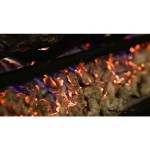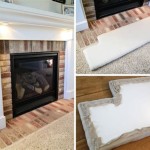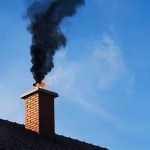Wood and Gas Fireplaces: A Comprehensive Comparison
Fireplaces have long been a central element in homes, providing warmth and a focal point for gathering. While diverse options exist, wood-burning and gas fireplaces remain popular choices, each presenting distinct advantages and disadvantages. This article provides a detailed comparison of these two types of fireplaces, covering aspects such as aesthetics, efficiency, environmental impact, cost, and maintenance requirements, enabling informed decision-making for homeowners.
Aesthetic Appeal and Atmosphere
The aesthetic appeal of a fireplace significantly influences its perceived value. Wood-burning fireplaces offer a traditional, rustic charm, often associated with crackling sounds, a natural wood scent, and an authentic flame appearance. The variability of flame size and intensity, dictated by the type and quantity of wood burned, contributes to a dynamic visual experience. This intrinsic appeal makes wood-burning fireplaces a favorite for those seeking a genuine, old-world atmosphere.
Gas fireplaces, on the other hand, offer a more controlled and consistent aesthetic. While early gas fireplaces sometimes lacked realism, modern designs have significantly improved flame appearance, with options mimicking the randomness and depth of a wood-burning fire. The flames in a gas fireplace are typically more uniform and predictable, offering a cleaner, more modern aesthetic. Furthermore, gas fireplaces offer immediate on-off operation and precise flame control, appealing to those prioritizing convenience and consistency.
The choice between the two often boils down to personal preference. Do you prefer the unpredictable, authentic charm of a wood fire, or the controlled and consistent flame of a gas fireplace?
Efficiency and Heating Capacity
The efficiency of a fireplace directly affects its ability to heat a space effectively and economically. Traditional open-hearth wood-burning fireplaces are notoriously inefficient, with much of the heat escaping up the chimney. The net heating efficiency can be as low as 10-20%. However, modern wood-burning stoves and fireplace inserts offer improved efficiency, achieving ratings of up to 70-80% when properly installed and operated. These improvements are achieved through features like airtight combustion chambers, catalytic converters, and insulated fireboxes, which increase heat retention and reduce heat loss.
Gas fireplaces generally exhibit higher efficiency compared to traditional open-hearth wood fireplaces. Direct-vent gas fireplaces, which draw combustion air from outside and vent exhaust gases directly outside, can achieve efficiencies of up to 80-90%. Vent-free gas fireplaces, while offering the convenience of no venting requirements, are less efficient and may pose indoor air quality concerns due to the release of combustion byproducts within the home. However, their efficiency typically falls in the 70-80% range.
The heating capacity of both types of fireplaces depends on their size and BTU (British Thermal Unit) output. Wood-burning fireplaces, when properly sized and operated, can provide significant supplemental heat, particularly in smaller, well-insulated spaces. Gas fireplaces offer a range of BTU outputs, allowing homeowners to select a model appropriate for their heating needs. Smaller gas fireplaces are ideal for zone heating, while larger units can effectively heat larger living areas.
Environmental Impact and Sustainability
The environmental impact of fireplaces is a crucial consideration in contemporary society. Wood-burning fireplaces, while utilizing a renewable resource, can contribute to air pollution through the emission of particulate matter (PM), volatile organic compounds (VOCs), and carbon monoxide (CO). These emissions can negatively impact both indoor and outdoor air quality, particularly in densely populated areas or during periods of stagnant air. The EPA (Environmental Protection Agency) regulates wood-burning stoves and fireplace inserts to minimize these emissions.
The sustainability of wood-burning depends on responsible forestry practices and the type of wood burned. Utilizing sustainably harvested wood and burning seasoned, dry wood reduces emissions and increases efficiency. Burning green or unseasoned wood produces more smoke and creosote, increasing the risk of chimney fires and contributing to air pollution.
Gas fireplaces, fueled by natural gas or propane, generally produce lower emissions compared to traditional wood-burning fireplaces but are not without environmental consequences. The extraction and transportation of natural gas can contribute to greenhouse gas emissions. Furthermore, the combustion of natural gas releases carbon dioxide (CO2), a significant greenhouse gas, although in lower quantities compared to burning coal or oil. Modern gas fireplaces, however, are designed to minimize emissions and operate at relatively high efficiency levels.
The choice between wood and gas from an environmental perspective depends on a complex assessment of factors, including the source of the wood, the efficiency of the fireplace, and the availability of renewable energy alternatives for gas production. Each option presents its own set of environmental trade-offs.
Cost Considerations: Installation, Fuel, and Maintenance
The initial cost of installation is a significant factor in fireplace selection. Wood-burning fireplaces typically require a chimney, foundation, and firebox, resulting in higher installation costs compared to gas fireplaces, especially if a chimney doesn't already exist. The cost of installing a wood-burning fireplace can range from several thousand dollars to upwards of ten thousand dollars, depending on the complexity of the installation and the materials used.
Gas fireplaces offer more flexible installation options, with direct-vent and vent-free models available. Direct-vent models are typically less expensive to install than traditional wood-burning fireplaces but require venting to the outside. Vent-free models offer the lowest installation costs, but their use may be restricted in some areas due to indoor air quality concerns. The cost of a gas fireplace installation can vary widely depending on the model, venting requirements, and location of the gas supply.
Fuel costs represent an ongoing expense for fireplace owners. The cost of firewood varies depending on location, type of wood, and quantity purchased. Firewood can be relatively inexpensive if homeowners have access to a sustainable source. However, purchasing seasoned firewood regularly can be a significant expense. Gas costs, on the other hand, are typically more stable and predictable. Natural gas prices fluctuate based on market conditions and regional factors, but generally offer a consistent fuel source.
Maintenance costs also differ between wood and gas fireplaces. Wood-burning fireplaces require regular chimney cleaning to remove creosote buildup, preventing chimney fires. Annual inspections are also recommended. The cost of chimney cleaning and inspection can range from $100 to $300. Gas fireplaces require less frequent maintenance, typically involving annual inspections and burner cleaning. The cost of gas fireplace maintenance is generally lower than that of wood-burning fireplaces.
Operational Considerations: Convenience and Safety
The operational convenience of a fireplace significantly affects its usability and enjoyment. Gas fireplaces offer unparalleled convenience, with push-button or remote-control operation, instant on-off functionality, and precise flame control. The need for storing and handling firewood is eliminated, and the fireplace can be easily adjusted to maintain a desired room temperature.
Wood-burning fireplaces offer less convenience, requiring manual loading of wood, tending to the fire, and cleaning up ashes. However, the process of building and maintaining a wood fire can be a rewarding experience for many homeowners. There's a certain inherent satisfaction derived from the hands-on approach.
Safety is paramount with either type of fireplace. Wood-burning fireplaces pose a risk of chimney fires if creosote accumulates in the chimney. Regular chimney cleaning and proper burning practices are essential for preventing chimney fires. Gas fireplaces can pose a risk of gas leaks and carbon monoxide poisoning if not properly installed and maintained. Carbon monoxide detectors are essential in homes with gas fireplaces.
Both types of fireplaces require careful attention to safety protocols. Proper installation, regular maintenance, and adherence to manufacturer's instructions are crucial for ensuring safe operation and preventing accidents.

Fireplaces Inserts Wood Gas Fireplace Xtrordinair

Wood Fireplaces Gas Conversion That Counts
Converting A Wood Burning Fireplace Into Gas Heat Glo
Can I Convert My Wood Burning Fireplace To Gas Woodlanddirect Com

Pros And Cons Of Gas Wood Electric Fireplaces Tripod International

Gas Vs Wood Fireplaces Gaithersburg Md Fireplace Service

Should You Convert Your Cabin Fireplace From Wood To Gas

Can A Wood Burning Fireplace Be Converted To Gas The Flame Company

Pros And Cons Of Gas Wood Electric Fireplaces Tripod International

Gas Logs Vs Wood Burning Outdoor Fireplaces Green Okie








